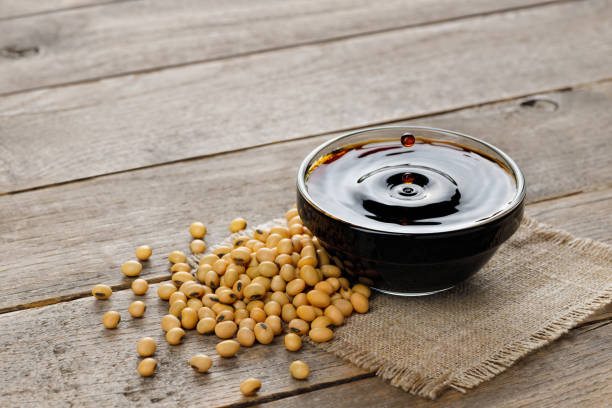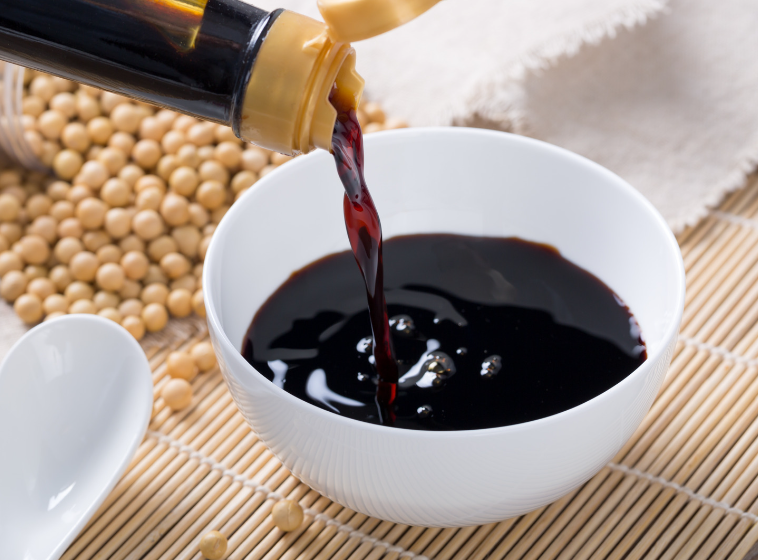What to Eat and Drink
Discover the Healthiest Soy Sauce Option for a Better You
It adds depth and complexity to dishes, making it a staple in many kitchens around the world.
Soy sauce is a popular condiment that originated in China over 2,500 years ago. It is made by fermenting soybeans with water and salt, along with the addition of roasted grains like wheat or barley. The mixture is then left to ferment for a period of time, which can range from a few months to several years, depending on the desired flavor and quality.
Soy sauce is known for its rich, savory taste and is commonly used in Asian cuisine as a flavor enhancer and marinade. While soy sauce is primarily made from soybeans, the addition of grains during fermentation gives it a distinct flavor profile.
In addition to its culinary uses, soy sauce also offers various health benefits. It is a source of essential amino acids, which are the building blocks of proteins. It also contains vitamins and minerals, including potassium, iron, and manganese. However, not all soy sauces are created equal when it comes to their nutritional content and health implications.
Different types of soy sauce
There are several different types of soy sauce available on the market, each with its own unique characteristics and uses. Here are some of the most common types:
- Regular soy sauce: Regular soy sauce is the most common form of soy sauce available in supermarkets. It is composed out of soybeans, wheat, water, and salt. Regular soy sauce has a neutral flavor and is commonly used in cooking and flavoring.
- Light soy sauce: Light soy sauce, also known as thin soy sauce, has a lighter hue and saltier taste than ordinary soy sauce. It is produced with more soybeans and less wheat, resulting in a more strong flavor. Light soy sauce is typically used as a dip or to add umami flavor to foods.
- Dark soy sauce: Dark soy sauce has a thicker consistency and darker hue than standard soy sauce. It is prepared through a longer fermentation process and frequently includes molasses or caramel for extra sweetness and richness. Dark soy sauce is frequently used in braising, stir-frying, and marinades to add depth and color to foods.
- Tamari: Tamari is a gluten-free soy sauce that is prepared without the use of wheat. It developed in Japan and has a softer, less salty flavor than traditional soy sauce. Tamari is frequently preferred by people who are gluten sensitive or follow a gluten-free diet.
- Shoyu: Shoyu is a Japanese-style soy sauce made with soybeans and wheat. It has a well-balanced flavor and is often used in Japanese cuisine for dipping, marinating, and cooking. Shoyu is available in both light and dark kinds, providing variety in its application.

Nutritional benefits
Soy sauce offers several nutritional benefits, making it a healthy addition to your diet when consumed in moderation. Here are some key nutrients found in soy sauce:
- Protein: Soy sauce contains protein, which is necessary for the body’s tissue formation and repair. It includes all of the necessary amino acids, making it a complete protein source.
- Vitamins and minerals: Soy sauce provides vitamins and minerals like potassium, iron, and manganese. These nutrients are essential for a variety of body activities, including blood pressure regulation, red blood cell synthesis, and bone health promotion.
- Antioxidants: Soy sauce includes antioxidants including flavonoids, which protect the body from oxidative stress and inflammation. These substances have been associated to a lower risk of chronic diseases like heart disease and some types of cancers.
- Probiotics: Traditional, naturally fermented soy sauces may contain bacteria that promote gut health and digestion. These probiotics can help maintain a healthy balance of microorganisms in the gut, promoting overall digestive health.

Health concerns with soy sauce
While soy sauce offers various health benefits, there are some potential concerns to be aware of, especially when consumed in excess or by individuals with specific dietary needs. Here are a few health considerations:
- Sodium content: Soy sauce has a high sodium level due to the fermentation process and the addition of salt. Excess sodium intake can lead to high blood pressure and an increased risk of heart disease. If you’re limiting your salt intake, you should eat soy sauce in moderation and choose low-sodium types.
- Gluten sensitivity: Traditional soy sauce is usually derived from wheat, which contains gluten. Individuals with gluten intolerance or celiac disease should use gluten-free soy sauce substitutes such as tamari.
- Allergies: Soy is a frequent allergen, and some people may have allergic reactions to soy sauce or other soy-based products. If you have a soy allergy, you should avoid soy sauce totally or use alternative condiments.
- Chemically treated soy sauces: Some commercially available soy sauces may be chemically processed and contain artificial ingredients or preservatives. These additives can reduce the nutritional value of soy sauce and may have adverse health effects. It is advisable to use naturally fermented soy sauce manufactured from simple, natural components.

Choosing the healthiest soy sauce options
When it comes to choosing the healthiest soy sauce options, there are a few factors to consider. Here are some tips to help you make an informed decision:
- Low-sodium soy sauce alternatives: If you are concerned about your sodium intake, opt for low-sodium soy sauce options. These varieties contain less salt while still providing the savory flavor you love. Look for labels that indicate “low-sodium” or “reduced sodium” to ensure you are making a healthier choice.
- Organic soy sauce options: Choosing organic soy sauce can help ensure that you are consuming a product made from high-quality, non-genetically modified soybeans. Organic soy sauce is also less likely to contain artificial additives or preservatives. Look for the organic certification logo on the packaging to ensure its authenticity.
- Gluten-free soy sauce options: If you have gluten sensitivities or follow a gluten-free diet, opt for soy sauce alternatives that are specifically labeled as gluten-free. Tamari is a popular gluten-free soy sauce option that is made without the addition of wheat.
- Homemade soy sauce recipes: For the ultimate control over the ingredients and flavor profile, consider making your own soy sauce at home. Homemade soy sauce allows you to customize the fermentation process and tailor it to your preferences. There are various recipes available online that guide you through the step-by-step process of making soy sauce from scratch.
Conclusion
Finally, when selecting the healthiest soy sauce, evaluate the components, fermentation process, and any unique dietary needs or preferences. It is important to choose soy sauces manufactured from simple, natural ingredients that contain no artificial additions or preservatives. To address specific health concerns, low-sodium, organic, and gluten-free soy sauce alternatives are available.
Remember to take soy sauce in moderation because it is naturally high in salt. You can enjoy the rich flavors and nutritional benefits of soy sauce without jeopardizing your health if you make informed decisions and keep your dietary demands in mind. So, go ahead and explore the various world of soy sauce, looking for the healthiest one that satisfies your taste buds and promotes your overall wellness.
Trusted Health, Wellness, and Medical advice for your well-being



